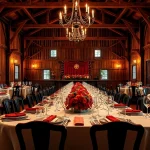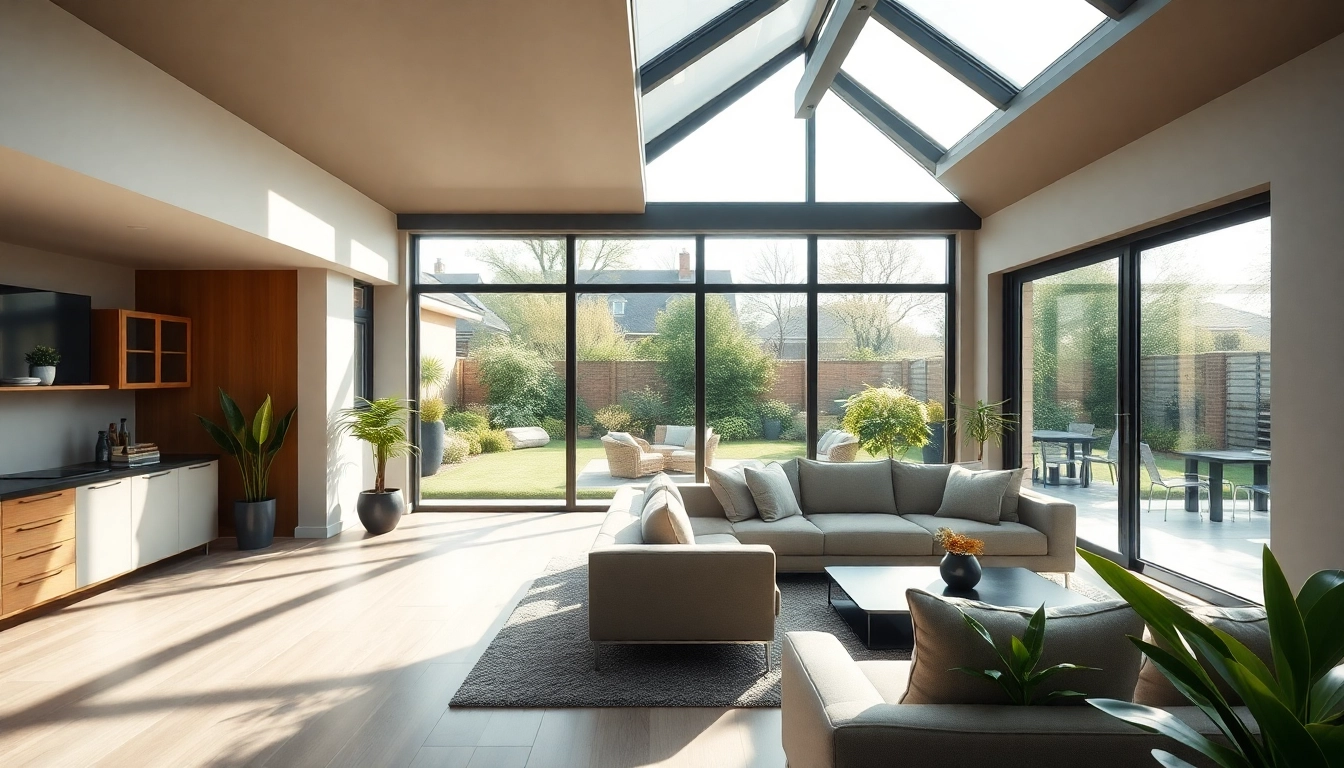Understanding Home Extensions
What are Home Extensions?
Home extensions refer to the process of adding additional square footage to a residential property, thus increasing its size and functionality. These enhancements can take various forms, including adding new rooms, enlarging existing spaces, or even creating entirely new floors. The goal is often to accommodate a family’s growing needs without the hassle of moving. If you’re looking to create more space or simply enhance your living environment, home extensions are a viable solution worth considering.
The Benefits of Home Extensions
Home extensions come with a multitude of benefits that range from practical to financial. Here are some of the essential advantages you can expect:
- Increased Space: One of the clear advantages is the additional space to accommodate your growing family or lifestyle changes.
- Enhanced Property Value: Well-executed extensions not only add space but can significantly increase the overall value of your property in the real estate market.
- Improved Functionality: Extensions can be designed to create multifunctional spaces that better meet your family’s needs, such as crafting a home office, playroom, or guest suite.
- Cost-Effectiveness: Compared to moving, building an extension can often be a more economical option, saving you on relocation costs and stamp duties.
- Preservation of Community: Extensions allow you to stay in your beloved neighborhood, preserving your connections and community ties while enhancing your home.
Common Types of Home Extensions
Before embarking on a home extension project, it’s crucial to understand the different types available. Here are some popular options:
- Single-Storey Extensions: Ideal for expanding your kitchen, dining rooms, or living areas without altering the home’s overall structure significantly.
- Double-Storey Extensions: These extensions add substantial footprint and can create additional bedrooms or bathrooms above existing ground levels.
- Loft Conversions: A great way to fully utilize the space in your attic, transforming it into functional living space like an office or an extra bedroom.
- Garage Conversions: Repurposing your garage can provide valuable room while avoiding the need for a new structure.
- Garden Rooms: These are freestanding structures built in your garden that can serve as home offices, studios, or recreational spaces.
Planning Your Home Extension
Assessing Your Space and Needs
The first step in planning your home extension is assessing the available space and determining your specific needs. Ask yourself what you want to achieve from the extension:
- Do you need more living space for a growing family?
- Would a home office be beneficial for remote work?
- Do you envision an entertainment area for hosting guests?
Conducting a thorough assessment will involve measuring your current spaces, analyzing how you use them, and determining how an extension can enhance functionality. You might also want to think about how the extension will integrate with your lifestyle and existing home layout.
Understanding Local Regulations
Before you begin any construction, understanding local regulations and building codes is paramount. Home extensions may require special permits depending on your local area. Typically, some of the essential regulations include:
- Planning Permissions: In many areas, you may need to apply for planning permission, especially for larger projects or changes to the property’s external appearance.
- Building Regulations: Ensure the extension meets safety and structural norms concerning fire safety, energy efficiency, and accessibility.
Lorem Ipsum
Budgeting for Your Home Extension
Establishing a budget is a crucial part of the planning phase. The cost of home extensions can vary significantly based on location, size, and materials. Here are some costs to consider:
- Materials: Choose materials that fit your budget while also providing longevity and aesthetic appeal.
- Labor Costs: Skilled labor can account for a large chunk of your budget. It’s essential to get accurate estimates from different contractors.
- Permitting Fees: These can also impact your overall budget and should not be overlooked.
Remember to leave room in your budget for unforeseen expenses, which are common in construction projects.
Design Considerations for Home Extensions
Choosing the Right Style
When designing your home extension, the style is vital for maintaining the overall aesthetic of your home. Your new space should either blend seamlessly with your existing structure or intentionally contrast with it for visual interest. Popular styles include:
- Modern Designs: Characterized by clean lines, large windows, and open spaces, which often create a minimalistic approach.
- Traditional Styles: Extensions that complement classic homes often feature matching materials and design elements.
- Contemporary Additions: Mixing various styles can give your home a fresh modern feel while respecting the original design.
Integrating with Existing Architecture
The integration of your extension with existing architecture is crucial for a cohesive look. This involves matching the materials, colors, and architectural details of your current home. Some tips include:
- Selecting bricks or stones that match the existing structure.
- Maintaining rooflines and eaves in a way that respects the original design.
- Incorporating similar window styles and trim for a uniform appearance.
Maximizing Natural Light and Space
Natural light can dramatically enhance the mood and functionality of the new space. Here are some design considerations to make the most of light:
- Large Windows and Glass Doors: These can significantly increase the flow of natural light into your home.
- Skylights: A fantastic addition to loft conversions and flat roofs that allows sunlight to penetrate deep into the home.
- Open Floor Plans: When planning your layout, consider an open-plan design to create a sense of spaciousness.
Execution of the Home Extension Project
Selecting a Contractor
Finding the right contractor is crucial to the success of your home extension project. Here are steps to ensure you make the right choice:
- Research: Look for contractors with a strong reputation in home extensions in your area.
- Get Quotes: Approach multiple contractors to get a range of quotes, checking that they include comparable scopes of work.
- Check References: Ask previous clients about their experiences and view the contractor’s completed projects.
Managing the Construction Process
Once you have selected a contractor, managing the construction process effectively is essential. Here are some tips:
- Regular Communication: Maintain open lines of communication with your contractor to stay updated on progress and address any concerns immediately.
- Ensure Quality Control: Regularly inspect the work to ensure that it meets the standards outlined in your contract.
- Be Flexible: Be prepared to make real-time decisions as the project evolves, especially if unforeseen issues arise.
Staying Within Budget and Timeline
Extensions can go over budget and beyond deadlines, but careful management can mitigate these risks. Here’s how:
- Monitor Expenses: Keep a detailed log of actual expenses against your budget to avoid overspending.
- Set Clear Deadlines: Work with your contractor to create a timeline, and revisit it regularly to assess progress.
- Anticipate Delays: Weather conditions, supply chain issues, and other unexpected problems can delay construction. Having a buffer built into your timeline can help manage expectations.
Post-Completion Considerations
Furnishing Your New Space
After the construction is completed, it’s time to focus on furnishing your new extension. Here’s how to approach this:
- Functional Layout: Plan your furniture layout based on how the space will be used: hosting, work, relaxation, etc.
- Pick Color Schemes: Use colors that harmonize with the existing home design while providing a refreshing atmosphere.
- Incorporate Textures and Patterns: This can add depth and warmth to your new space.
Monitoring Structural Integrity
Once your extension is complete, monitoring its structural integrity is crucial for long-term safety. Consider:
- Regular Inspections: Conduct routine checks for any signs of settling or cracking.
- Seek Professional Evaluations: Engage professionals for inspections to ensure everything remains in good condition.
Long-Term Maintenance of Home Extensions
To prolong the life of your home extension and protect your investment, implement a long-term maintenance plan. This may include:
- Regular Cleaning: Keep gutters, windows, and roofs clean to avoid potential damage.
- Scheduled Repairs: Address minor issues immediately before they escalate into significant problems.
- Seasonal Checks: Inspect for moisture, heating and cooling performance, and overall upkeep needs as seasons change.









